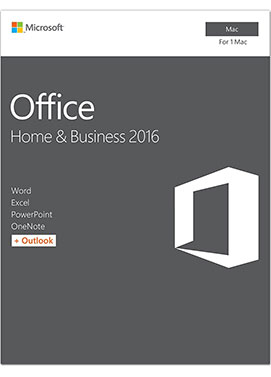

It is easier in operation than you uninstalling them manually. Macube Cleaner's Uninstaller (opens new window) allows you to quickly uninstall Microsoft Office and all the associated files from Mac within just a few clicks.
Office 2016 for mac file location manual#
If you find there are too many steps in the manual operation and if you are tired of following all the steps, the Uninstaller in Macube Cleaner (opens new window) can help you a lot. Step 2: Ctrl + click and choose "Options".Īfter all the steps above, restart your Mac to finish the uninstallation for MS Office completely. Step 1: If any Office apps are put in the dock on your Mac. Ctrl + click or right-click on each of these folders below if present, and select "Move to Trash". Step 6: Click the back arrow to go back to Library folder. If you see the Online Locations button, the dialog box is currently displaying a folder on your computer. If the dialog box does not show a folder or folders on your computer, click On My Mac.

Step 5: Back to Finder, head to Library > Containers. On the File menu, click Save as, or press + Shift + S. Step 4: In the dialog box, tick "Show Library Folder" and click "Save". Step 3: Then click on "View > Show View Options". Step 2: In Finder, click "View > as List". Step 3: Ctrl + Click the selected applications and then choose "Move to Trash". Step 2: Press "Command" button and click to select all the Office 365 applications. Remove MS Office 365 Applications on Mac: If not, empty Trash and restart the Mac.Ĭompletely uninstalling Office 365, the 2016 edition, on Mac includes three parts. Step 4: Check whether there is anything you still want to keep in Trash. And then remove Office from Mac to Trash. Step 3: Locate Microsoft Office 2011 folder. Step 1: Quit all the Office applications first, no matter it is Word, Excel, PowerPoint or OneNote. Note that to uninstall Office 365 on your Mac manually requires to be signed in as an administrator on the Mac. Uninstall Office 365 (2011/2016) on Mac Manually Switch back to Column view ( +3) and click Library > Group Containersand ctrl+click or right-click each of these folders if present, and then click Move to Trash.2. Switch back to Column view ( +3) and click Library > Containers and ctrl+click or right-click each of these folders if present, and then click Move to Trash. In the View Options dialog box, select Show Library Folder. On the Finder menu, click View > as List, and then click View > Show View Options. To remove files from your user Library folder, you'll need to first set the Finder View options.

Remove files from your user Library folder Go to Library > Preferences and ctrl+click or right-click this file if present, and then click Move to Trash.Ĭom. (if present) Go to Library > PrivilegedHelperTools, ctrl+click or right-click this file if present, and then click Move to Trash.Ĭom. (if present)Ĭom. (if present) Office 2011 uses a different location for files: /Documents/Microsoft User. In the LaunchDaemons folder, ctrl+click or right-click this file if present, and then click Move to Trash.Ĭom.plist (if present)Ĭom. (if present) If youre having problems with Office 2016 for Mac especially Outlook 2016. Go to Macintosh HD > Library > LaunchDaemons. Open Finder, click Go > Computer, and then click View > as Columns. The supporting files you need to remove are in the Library and User folders. Step 1: Remove Office 2016 for Mac applicationsĬommand +click to select all of the Office 2016 for Mac applications.Ĭtrl+click or right-click the applications you selected and click Move to Trash.


 0 kommentar(er)
0 kommentar(er)
